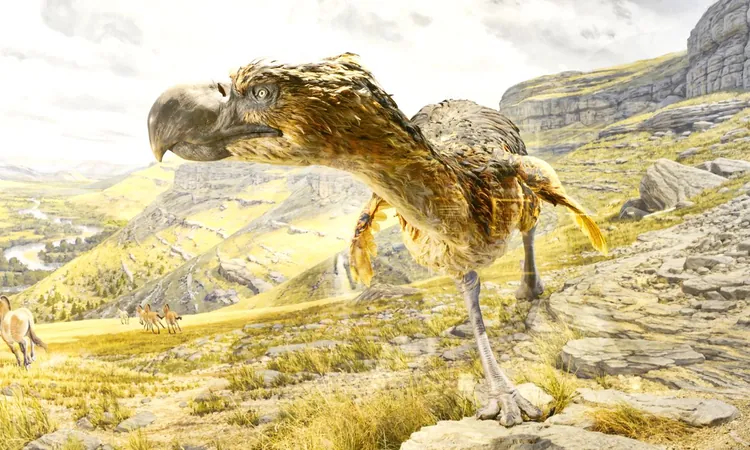
Giant Caiman Takes Down the Largest 'Terror Bird' – 12 Million-Year-Old Mystery Unveiled!
2024-11-06
Author: Mei
An Astonishing Revelation
In an astonishing revelation, researchers have uncovered the dramatic demise of the largest 'terror bird' ever documented, which met its end nearly 12 million years ago at the jaws of a colossal caiman. This groundbreaking conclusion comes from a 3D analysis of its fossilized leg, shedding light on a fierce battle that once transpired in what is now the Tatacoa Desert of Colombia.
Study Publication
Published on November 4 in the journal *Papers in Palaeontology*, the study discusses the discovery of a fossil believed to belong to a member of the Phorusrhacid family—an imposing lineage of flightless, predatory birds known colloquially as 'terror birds.' This particular specimen is significant, as it represents the first of its kind found in Colombia.
Insights from the Fossil{
Analysis of the fossilized leg bone—akin to a human shin—indicates this terror bird was impressively larger than previously known specimens. Estimates suggest it could be 5% to 20% bigger, tipping the scales at around 340 pounds (156 kilograms) and towering over 9 feet (2.7 meters) tall!
The Encounter with the Caiman
However, despite its massive size, this formidable bird was no match for the gargantuan caiman from the genus *Purussaurus*, estimated to have reached lengths exceeding 30 feet (9 meters). Researchers employed state-of-the-art portable scanning technology, which revealed harrowing deep puncture wounds on the leg bone, likely inflicted during the brutal encounter.
Expert Insights
Study co-author Siobhán Cooke, an associate professor at Johns Hopkins University School of Medicine, indicated that the bird would have succumbed to its severe injuries, given the size and strength of these ancient crocodilians. 'Its injuries were likely too severe for survival,' she stated.
Ecosystem Understanding
This find not only unveils the deadly interactions of prehistoric predators but also enriches our understanding of the ecology during the Miocene epoch, a period marked by a rich tapestry of life. Unlike most terror birds discovered in Patagonia, a temperate climate, this robust specimen thrived in a tropical environment brimming with diverse fauna. The lush landscapes of La Venta featured winding rivers and a variety of species, including primates, hoofed mammals, giant ground sloths, and ancient glyptodonts—armadillo-like creatures.
Evolutionary Insights
Luis Chiappe, senior vice president of research and collections at the Natural History Museum of Los Angeles County, remarked on this era of gigantic creatures, stating, 'During this epoch, we observed a notable evolution into larger forms of certain animal groups, including crocodilians and birds, in Colombia and elsewhere in South America.'
Fossil Classification
Interestingly, the fossil was unearthed nearly two decades ago, but its classification as a terror bird only came to light through advanced scanning techniques. Cooke highlighted the potential of discovering more unrecognized terror bird fossils within existing collections, as traditional methods may overlook less diagnostic bones.
Conclusion
This extraordinary story of predation offers a fresh perspective on the interactions of prehistoric giants and reveals the complex ecosystems that existed millions of years ago—proof that in nature, the past can be as riveting as any thriller! Stay tuned for more updates as scientists continue to unveil the mysteries of our planet's ancient history!


 Brasil (PT)
Brasil (PT)
 Canada (EN)
Canada (EN)
 Chile (ES)
Chile (ES)
 España (ES)
España (ES)
 France (FR)
France (FR)
 Hong Kong (EN)
Hong Kong (EN)
 Italia (IT)
Italia (IT)
 日本 (JA)
日本 (JA)
 Magyarország (HU)
Magyarország (HU)
 Norge (NO)
Norge (NO)
 Polska (PL)
Polska (PL)
 Schweiz (DE)
Schweiz (DE)
 Singapore (EN)
Singapore (EN)
 Sverige (SV)
Sverige (SV)
 Suomi (FI)
Suomi (FI)
 Türkiye (TR)
Türkiye (TR)